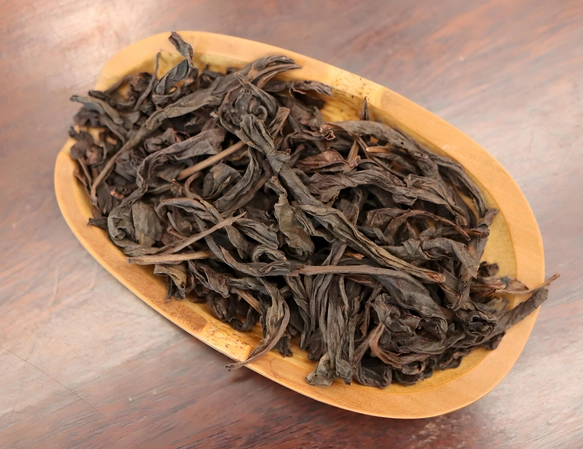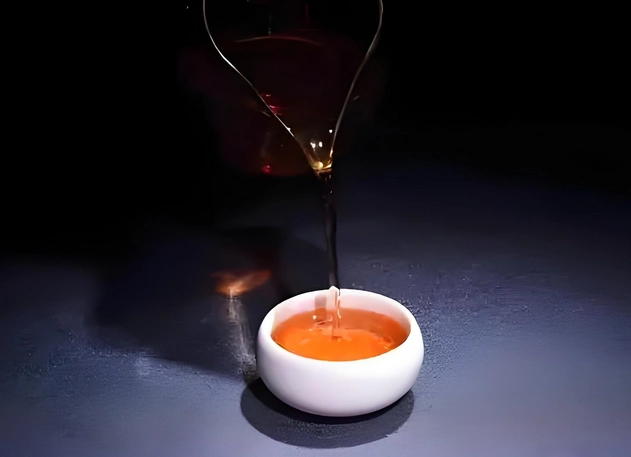Oolong Tea and Blood Sugar Connection
Oolong tea and blood sugar intertwine in a dance of flavor and wellness, promising both a sensory journey and balanced health. From the first aromatic steam that rises, you sense warmth and clarity coursing through your veins. Studies suggest that sipping oolong tea can gently nudge your glucose levels toward harmony, infusing each moment with calm confidence. As you cradle a warm cup between your hands, inhale its fragrant floral notes mingling with hints of honeyed malt. It’s more than a beverage—it’s a ritual engineered to support your entire being.
Imagine waking on a cool morning, sunlight just brushing the horizon, and preparing a pot of oolong tea. Steam swirls like mist over a serene lake, and with each sip, the tea’s nuanced complexity unfolds: a whisper of orchid and jasmine, a caress of roasted chestnut, and a lingering sweetness that soothes any residual tension. In that moment, your mind quietly absorbs the promise that oolong tea and blood sugar can find equilibrium together. Let’s embark on a comprehensive exploration of how this remarkable tea supports healthy glucose management, fortifies heart and gut health, and complements a holistic lifestyle.

1. Understanding Blood Sugar Regulation
1.1 What Is Blood Sugar?
Blood sugar—also known as blood glucose—is the body’s primary energy source, derived from the carbohydrates we consume. It flows through your bloodstream, fueling everything from a gentle morning stroll to intense workouts. After a meal, your digestive system breaks carbohydrates into glucose, sending it into circulation. In response, your pancreas secretes insulin, a hormone that guides glucose into cells, where it’s used as fuel or stored for later use.
When this finely tuned system falters—due to insulin resistance, insufficient insulin production, or dietary imbalances—blood sugar levels can spike or plummet, leading to fatigue, foggy thinking, and long-term health complications. Maintaining stable glucose levels is crucial for energy, mental clarity, and overall vitality.
1.2 Diabetes and Prediabetes Overview
Diabetes arises when blood sugar regulation goes awry. In Type 1 diabetes, the pancreas fails to produce insulin, necessitating lifelong insulin therapy. Type 2 diabetes, far more common, stems from insulin resistance—cells fail to respond to insulin signals—or inadequate insulin secretion. Before full-blown diabetes emerges, many experience prediabetes, characterized by blood sugar readings higher than normal but not yet in the diabetic range. This stage offers a critical window: positive lifestyle changes, including diet, exercise, and mindful choices like incorporating oolong tea and blood sugar balancing, can reverse or delay the progression.
Left unchecked, chronic high blood sugar damages blood vessels, nerves, kidneys, and eyesight, increasing risks of cardiovascular disease, neuropathy, and kidney disease. Yet with deliberate actions—such as incorporating antioxidant-rich teas—individuals can empower their bodies to reclaim balance.
2. How Oolong Tea Affects Blood Sugar
2.1 Polyphenols and Insulin Sensitivity
At the heart of oolong tea and blood sugar harmony lie polyphenols—powerful plant compounds that act as antioxidants. Oolong tea, with its partial fermentation, contains unique polyphenols such as theaflavins and thearubigins that differ from those in green or black tea. These compounds can enhance insulin sensitivity by:
- Reducing Oxidative Stress: Oxidative stress interferes with insulin signaling. Oolong’s polyphenols neutralize free radicals, preserving cellular health and helping insulin work more effectively.
- Modulating Enzymes: Certain oolong polyphenols inhibit digestive enzymes like α-amylase and α-glucosidase, slowing carbohydrate breakdown and attenuating post-meal glucose spikes.
When you sip a cup of hot oolong tea, you engage these polyphenols in real time. Their gentle action can help reduce insulin resistance—key for smoothing out blood sugar peaks and valleys.
2.2 Studies on Oolong Tea and Blood Sugar Levels
Research increasingly supports the notion that oolong tea and blood sugar levels are positively linked. In one study published in the Journal of Food and Nutrition Research, participants who consumed oolong tea daily for twelve weeks saw significant reductions in fasting blood glucose compared to a control group. Another trial in the International Journal of Vitamin and Nutrition Research found that overweight individuals drinking oolong tea during meals experienced lower postprandial glucose rises than those drinking water alone.
These clinical findings underscore oolong’s role as more than a flavorful beverage—it’s a functional ally in blood sugar management. Whether enjoyed as a morning ritual or afternoon respite, each fragrant cup offers scientifically backed benefits that support metabolic balance.
3. Oolong Tea for Gut Health and Blood Sugar Control
3.1 Gut Microbiome’s Role in Glucose Metabolism
Your gut microbiome—an intricate ecosystem of bacteria and other microorganisms—influences how your body processes nutrients, including glucose. A healthy gut fosters balanced inflammation levels, produces beneficial short-chain fatty acids, and supports proper insulin signaling. Conversely, dysbiosis (an imbalance of gut bacteria) can impair metabolic function, contributing to insulin resistance and erratic blood sugar.
Emerging research ties oolong tea and blood sugar control to gut health. Oolong polyphenols feed beneficial gut bacteria like Bifidobacterium and Lactobacillus, promoting an environment that enhances glucose metabolism. In animal models, oolong consumption led to shifts in gut microbiota composition that correlated with improved insulin sensitivity.
3.2 Oolong Tea and Gut Health Synergy
Drinking oolong tea can soothe digestive discomfort, reduce bloating, and support overall gut integrity—factors that indirectly foster stable blood sugar levels. The tea’s mild anti-inflammatory properties calm intestinal lining irritations, while its stimulating yet balanced caffeine content encourages gentle peristalsis (digestive tract motion).
Imagine combining oolong tea and blood sugar benefits with a morning routine: a steaming cup of oolong helps awaken your gut, kickstarting healthy bacteria activity and priming your system to absorb nutrients evenly. Over time, these subtle shifts contribute to a gut environment more adept at modulating blood sugar.

4. Oolong Tea and Heart Health Connection
4.1 Cardiovascular Risks of Uncontrolled Blood Sugar
Unmanaged blood sugar inflicts damage on blood vessel walls, leading to atherosclerosis (plaque buildup), high blood pressure, and increased risk of heart attack or stroke. Elevated glucose levels also promote systemic inflammation and oxidative stress—two silent drivers of cardiovascular disease. Thus, maintaining stable blood sugar is essential not just for metabolic health but for a strong, resilient heart.
4.2 Oolong Tea’s Impact on Cholesterol and Blood Pressure
Here again, oolong tea and blood sugar join forces to protect your heart. Studies show that regular oolong consumption can:
- Lower LDL Cholesterol: Oolong polyphenols inhibit cholesterol absorption in the gut and upregulate genes responsible for cholesterol breakdown in the liver.
- Increase HDL Cholesterol: Known as “good” cholesterol, higher HDL levels correlate with lower cardiac risk.
- Improve Blood Pressure: The catechins and theaflavins in oolong promote vasodilation—relaxation of blood vessels—reducing systemic blood pressure.
In one clinical trial, participants who drank two to three cups of oolong tea daily for six weeks saw significant drops in both systolic and diastolic blood pressure. When you stabilize your blood sugar with oolong tea, you simultaneously bolster heart health, creating a virtuous cycle of wellness.
5. Oolong Tea for Immune System Support
5.1 Inflammation Reduction and Immune Function
Chronic inflammation undermines insulin sensitivity and disrupts glucose control. Oolong tea’s polyphenols have potent anti-inflammatory properties, dialing down overactive immune responses that can impair metabolic processes. EGCG (found abundantly in oolong) and other catechins suppress pro-inflammatory cytokines, enabling immune cells to function optimally while protecting tissues from inadvertent damage.
5.2 How Better Immunity Aids Blood Sugar Balance
A well-tuned immune system helps maintain the integrity of insulin-producing beta cells in the pancreas. When inflammation is minimized, these beta cells can respond more effectively to blood sugar fluctuations. By sipping oolong tea, you harness a twofold benefit: soothing inflammatory pathways and nurturing immune health, both of which support balanced blood sugar.
Picture yourself averaging two to three cups of oolong tea daily—each aromatic infusion quietly reinforcing your immune defenses and fostering a calm internal environment where glucose regulation thrives.
6. Choosing the Right Oolong Tea for Blood Sugar
6.1 Light vs. Dark Oolong Tea Varieties
When integrating oolong tea and blood sugar support into your routine, variety matters. Each level of roast and oxidation offers distinct polyphenol profiles and flavor experiences:
- Light Roast Oolong Tea (20–30% Oxidation):
- Oolong Tea Flavors: Prominent floral notes like orchid or jasmine, followed by delicate fruit hints (peach, apricot).
- Blood Sugar Impact: Contains higher levels of catechins that can boost metabolism and moderate early post-meal glucose.
- Medium Roast Oolong Tea (30–50% Oxidation):
- Oolong Tea Flavors: Creamy, honey-like sweetness balanced with gentle roasted undertones.
- Blood Sugar Impact: Provides balanced polyphenol content—good for sustaining energy without sharp peaks.
- High Fire Oolong Tea (50–70% Oxidation, Multiple Roast Cycles):
- Oolong Tea Flavors: Deep smoky, toasted chestnut, and dark caramel notes.
- Blood Sugar Impact: Rich in theaflavins and thearubigins that support longer-lasting blood sugar modulation, ideal for late afternoon or evening consumption.
- Dark Oolong Tea:
- Oolong Tea Flavors: Pronounced smoky, charred sugar, and graphite-like minerality.
- Blood Sugar Impact: Slower polyphenol release helps blunt large glucose spikes, useful when paired with heavier or sweeter meals.
Choose the style that resonates with your palate and timing: a light roast for a gentle morning lift, a medium roast midday balance, or a high fire and dark oolong for deeper, prolonged support.
6.2 Quality Indicators: Leaf Appearance and Aroma
To fully benefit from oolong tea and blood sugar synergy, seek premium oolong teas—look for:
- Whole, Unbroken Leaves: Indicate careful harvesting and minimal processing.
- Uniform Shape and Color: Slight sheen suggests freshly roasted oils.
- Fragrant Dry Leaf Aroma: Menthol, chestnut, or floral notes—depending on roast level—should waft unmistakably.
- Rise of Essential Oils: Gently squeeze a dry leaf; it should crumble slightly and release an aromatic burst.
Avoid dusty fannings or crushed blends; they lose polyphenol richness quickly. Investing in high-quality loose-leaf oolong ensures each infusion delivers potent, research-backed benefits for blood sugar balance.
7. Brewing and Consumption Tips
7.1 Optimal Steeping Temperatures and Times
The full power of oolong tea and blood sugar moderation unlocks when brewed thoughtfully:
- Light Roast Oolong:
- Water Temperature: 85–90°C (185–194°F)
- First Steep: 30–45 seconds
- Subsequent Steeps: Add 15–30 seconds per infusion, up to 6–8 steeps
- Medium Roast Oolong:
- Water Temperature: 90–95°C (194–203°F)
- First Steep: 45–60 seconds
- Subsequent Steeps: Add 30–45 seconds, up to 6 infusions
- High Fire & Dark Oolong:
- Water Temperature: 95–98°C (203–208°F)
- First Steep: 60–90 seconds
- Subsequent Steeps: 45–60 seconds initially, extending to 2–3 minutes by final steeps
Use a Gaiwan or small teapot (Gongfu style) for precise control. Rinse leaves briefly with hot water (5–10 seconds) to awaken essential oils and remove dust. A 1:20–1:25 tea-to-water ratio (6g per 120ml) emphasizes flavor and health benefits.
7.2 Ideal Daily Intake for Blood Sugar Benefits
Research suggests oolong tea and blood sugar improvements appear with consistent intake—around 2–4 cups per day:
- Morning Cup (Light Roast Oolong): Kickstart metabolism and moderate breakfast glucose.
- Midday Cup (Medium Roast Oolong): Support sustained energy and blunt lunch-related spikes.
- Afternoon/Evening Cup (High Fire/Dark Oolong): Promote lasting satiety and calm digestion after dinner.
Adjust based on caffeine sensitivity—opt for shorter steeps or reduced leaf quantity if prone to jitters. Aim for at least 2 cups daily to experience cumulative polyphenol effects on blood sugar regulation.
7.3 Best Times to Sip Oolong Tea for Stable Glucose
Strategic timing helps oolong tea and blood sugar synergy:
- Pre-Meal (10–15 minutes): A light cup may prime digestive enzymes and slow carbohydrate absorption.
- During Meal: Sipping slowly can moderate postprandial glucose surges.
- Post-Meal (20–30 minutes): Particularly helpful after a high-carb or high-fat meal to stabilize blood sugar and aid digestion.
Avoid drinking large volumes right before bed—caffeine in oolong may disrupt sleep, which indirectly affects blood sugar regulation. Balance tea rituals with personal schedule and sensitivity.

🔗 To learn more about how to make tea, check out Tbiwencha’s YouTube video explaining how to make tea.
8. Incorporating Oolong Tea into a Balanced Lifestyle
8.1 Pairing Oolong Tea with Blood Sugar-Friendly Foods
To amplify oolong tea and blood sugar harmony, combine tea with low-glycemic, nutrient-dense meals:
- Breakfast: Whole-grain porridge topped with berries and almonds, paired with a cup of light roast oolong.
- Lunch: Quinoa salad with leafy greens, avocado, chickpeas, and olive oil, accompanied by medium roast oolong for a sustained energy boost.
- Snack: Greek yogurt with cinnamon and walnuts, enjoyed with a high fire oolong to curb mid-afternoon cravings.
- Dinner: Grilled salmon, steamed vegetables, and brown rice, finished with a cup of dark oolong to aid overnight blood sugar stability.
Visualize a table set with vibrant bowls of colorful vegetables, lean proteins, and nuanced cups of oolong. Flavor combinations not only delight the senses but also encourage balanced glucose responses.
8.2 Exercise, Sleep, and Oolong Tea Synergy
Optimal blood sugar control arises from a triad: diet, exercise, and sleep—with oolong tea weaving through all three:
- Exercise: After a workout, sipping a refreshing cup of oolong replenishes antioxidants and supports muscle recovery while gently stabilizing post-exercise glucose.
- Sleep: While excessive caffeine may disrupt rest, early-evening sips of low-caffeine or well-steeped dark oolong can relax the mind, preparing your body for restorative sleep. Quality sleep sharpens insulin sensitivity and reinforces daytime glucose control.
- Stress Management: Ritualizing a mindful tea ceremony calms the mind, reduces cortisol spikes, and prevents stress-induced blood sugar fluctuations.
By integrating oolong tea and blood sugar strategies into your broader lifestyle, you create a supportive ecosystem where each element reinforces the others, forging a path toward lasting well-being.
9. Potential Side Effects and Precautions
9.1 Caffeine Content and Timing Considerations
Although oolong tea and blood sugar share a positive relationship, moderation is crucial. Oolong’s caffeine content (approx. 30–50 mg per 240ml cup) can disrupt sleep or raise heart rate if consumed excessively or too late. To avoid jitteriness or insomnia:
- Limit Afternoon Cups to Early Evening: No oolong after 7 PM to safeguard sleep quality.
- Opt for Shorter Steeping: Reduce steeped time to 30 seconds to lower caffeine extraction and emphasize polyphenol content.
- Consider Decaffeinated Oolong: For those highly sensitive, decaf options still offer antioxidant benefits with minimal stimulation.
By fine-tuning timing and steep duration, you maximize oolong tea and blood sugar benefits while minimizing adverse caffeine effects.
9.2 Possible Interactions with Medications
If you’re on glucose-lowering or blood pressure medications, consult a healthcare professional before embracing oolong tea and blood sugar regimens. Oolong polyphenols can potentiate certain medications, causing:
- Additive Blood Pressure Effects: Combined with antihypertensive drugs, oolong’s vasodilation properties may lower blood pressure more than desired.
- Enhanced Blood Sugar Reduction: If you’re on insulin or oral hypoglycemics, oolong’s glucose-lowering action could trigger hypoglycemia.
Always monitor blood sugar and blood pressure regularly during dietary changes, and adjust medication dosages as advised by your doctor.
10. Frequently Asked Questions
10.1 Can Oolong Tea Reverse Diabetes?
While oolong tea and blood sugar harmony offers compelling benefits, it cannot reverse Type 1 or long-standing Type 2 diabetes by itself. However, for individuals with prediabetes or early-stage Type 2, regular oolong tea consumption—combined with a balanced diet and exercise—can significantly improve insulin sensitivity and help prevent disease progression.
10.2 How Soon Will Oolong Tea Affect My Blood Sugar?
Individual responses vary, but some people notice modest post-meal glucose reductions within 2–4 weeks of consistent daily intake (2–3 cups). Optimal effects typically manifest after 6–8 weeks, when polyphenols accumulate and metabolic pathways adapt.
10.3 Does Oolong Tea Cause Hypoglycemia?
In rare cases—especially if you combine oolong with glucose-lowering medications—drinking several cups while fasting can push blood sugar too low. To prevent hypoglycemia, always consume oolong tea with or immediately after balanced meals, and monitor your glucose levels closely when starting.
Conclusion: Oolong Tea and Blood Sugar Harmony
When oolong tea and blood sugar align, you unlock a gentle, delicious pathway to balanced metabolism and vibrant well-being. From light floral crescendos to deep, smoky decadence, every oolong style offers unique polyphenol profiles that enhance insulin sensitivity, support heart and gut health, and calm the mind.
By carefully selecting premium oolong teas—whether a breezy Light Roast oolong tea in the morning, a comforting High Fire oolong tea post-lunch, or a bold Dark oolong tea after dinner—you cultivate a daily ritual that not only tantalizes your senses but also empowers your body. Pair your tea with nutrient-rich foods, maintain active movement and restful sleep, and always stay mindful of your body’s signals.
Let oolong tea and blood sugar become a cornerstone of your health journey. Sip, savor, and transform each moment into an opportunity for balance, vitality, and well-earned serenity.



